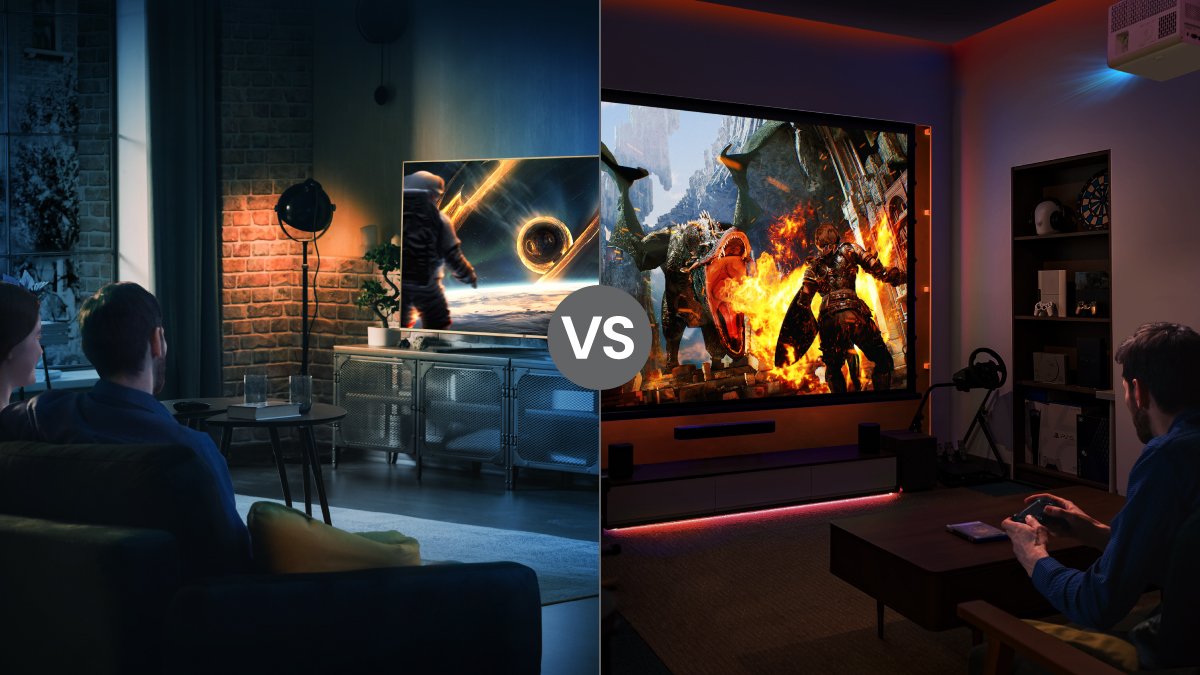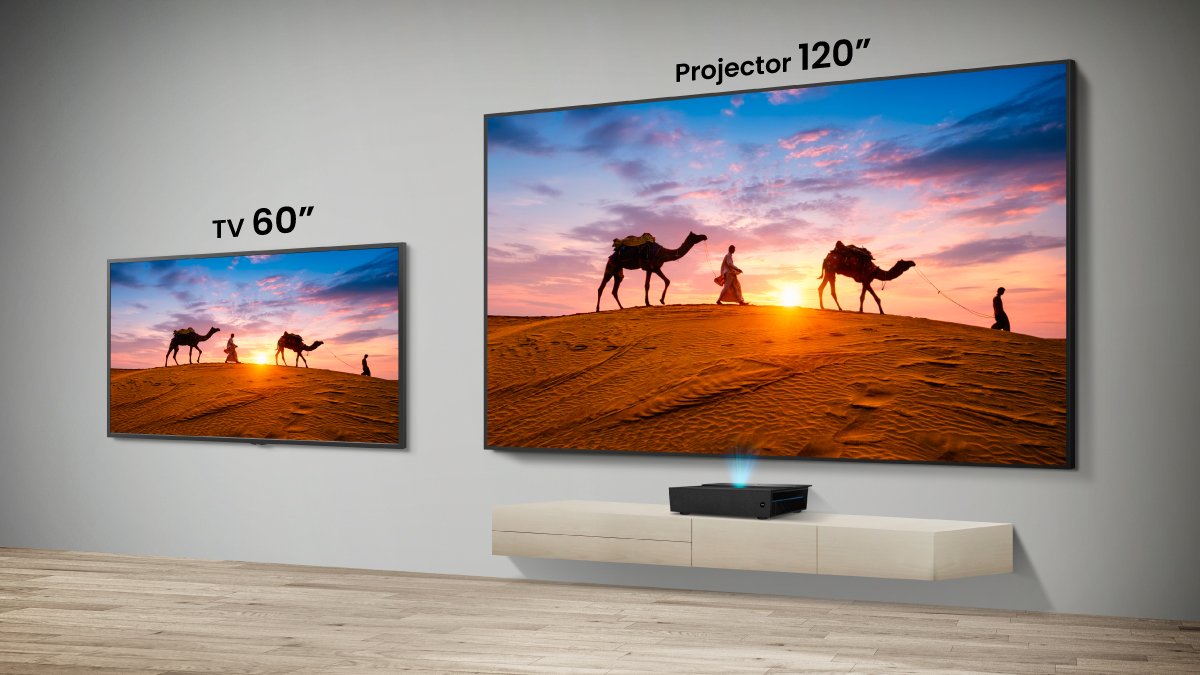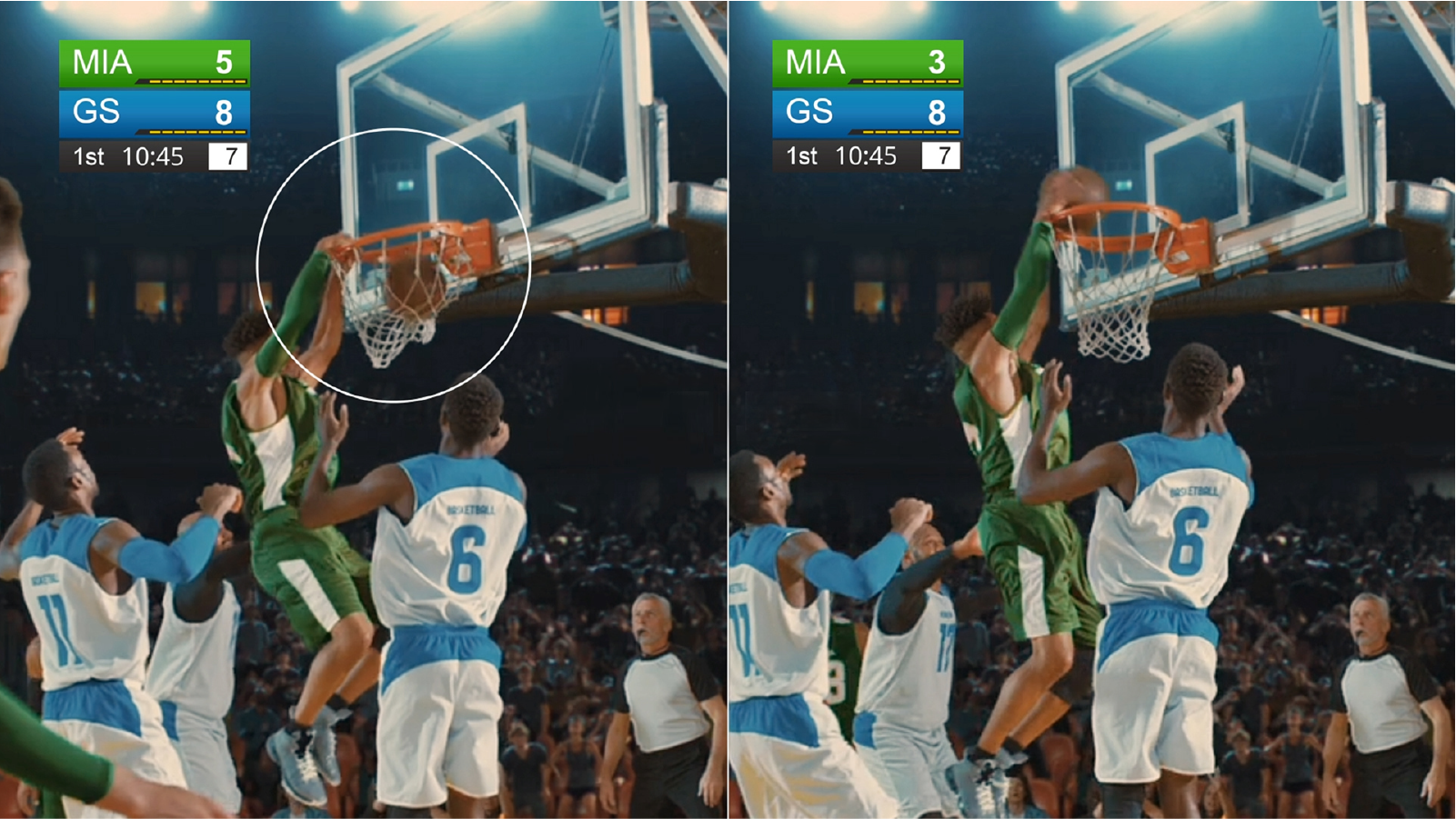Projectors offer the most immersive and compelling gaming experiences. Regardless of the different genres of games you like, you benefit from the size of the screen. If it’s a sports game, like NBA2K or the EA Sports FC series, then players are nearly life sized. If you want to do split screen couch co-op, you don’t have to squint, because each player’s portion of the screen is the size of the average TV. First person shooters have the same benefits. Every detail appears bigger and more impactful, which is extremely beneficial for online multiplayer. If it’s AAA open world titles you enjoy, you’ll see the difference in exploration on a truly big screen.
It's important to remember that AAA titles have development cycles and budgets similar to the biggest Hollywood blockbusters. As such, they’re meant to be enjoyed best on big screens, where you can fully appreciate every nuance, texture, detail, and location. Additionally, if you want to invite people over for gaming, there’s no comparing having to huddle around a 65” TV to luxuriously kicking back and playing together on a screen twice as big.
Contrary to our discussion on image quality, in gaming terms, projectors have achieved equality with TVs, making them ideal for PlayStation and Xbox consoles. They offer low input latency, often surpassing many gaming TVs, ensuring immediate on-screen response to every command. Unlike the past where projectors were deemed suitable only for casual party games, they now facilitate intense gaming sessions on screens much larger than a typical TV, significantly enhancing the gaming thrill.
The large screen size, when combined with tailored game mode settings, accurate color reproduction, immersive sound, and swift response times, creates an engaging and expansive gaming environment. While resolution and refresh rates are often highlighted in gaming discussions, it's the synergy of color, game mode settings, and sound that truly elevates the gaming experience across different genres.
In Role-Playing Games (RPGs), the storytelling experience is enhanced with rich colors displaying the narrative and deep bass intensifying the drama of the gameplay.
In Sports Games (SPGs), the authentic colors and clear vocals escalate the excitement of every score, making each moment a vivid celebration.
In First-Person Shooter (FPS) games, accurate color settings are key to identifying hidden threats in dark scenes, while crisp audio keeps you synced with the battlefield's dynamics.
In Racing Games (RCGs), the realistic motion coupled with vibrant colors makes every race visually exhilarating, while the distinct roar of engines and road sounds amplifies the excitement.
This exploration across genres highlights the adeptness of a good gaming projector in creating an environment where colors, sounds, and game modes to offer an immersive and responsive gaming experience, showcasing that the essence of great gaming extends beyond resolution and refresh rates.














